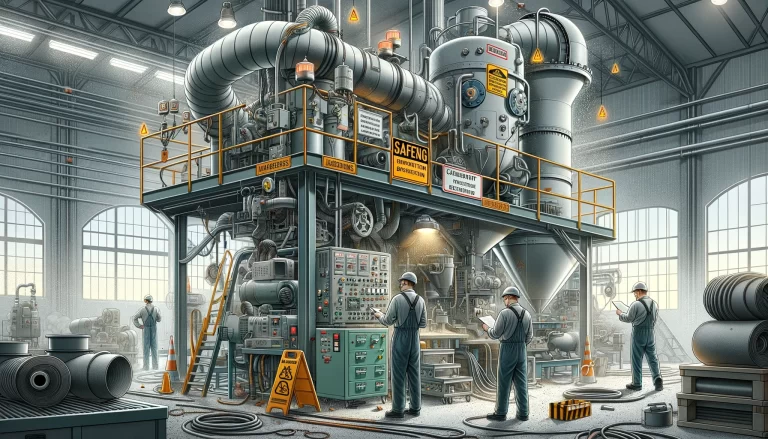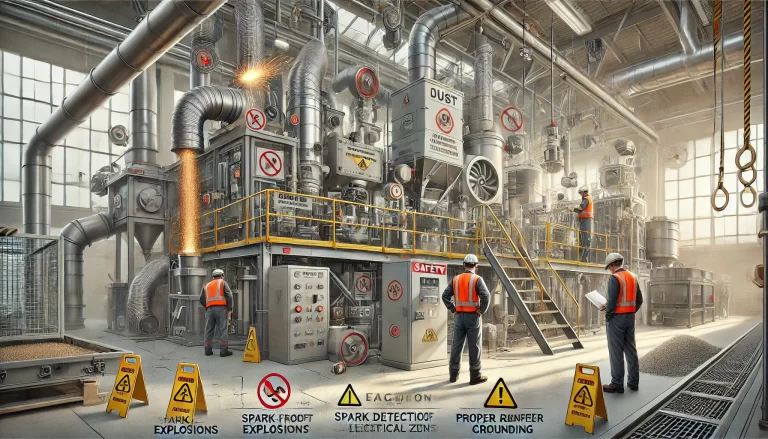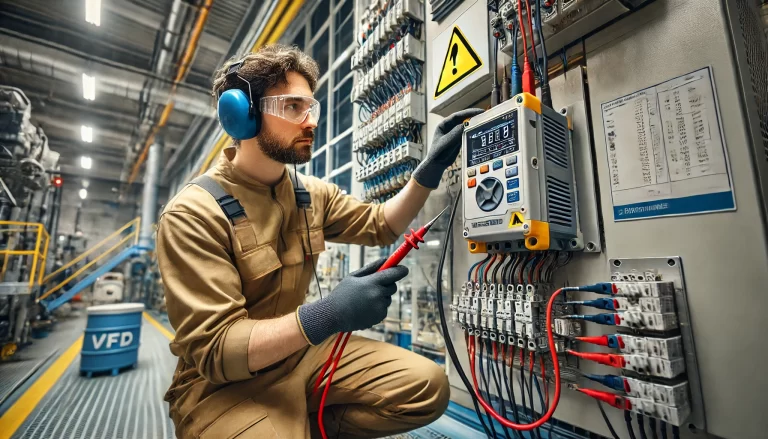Introduction
Dust explosions pose significant safety risks in industrial settings, especially in facilities handling combustible dust. This document outlines critical safety inspection points for dust-related processes and equipment, as well as the criteria for identifying major safety hazards. By adhering to these standards, enterprises can enhance their safety protocols and reduce the likelihood of catastrophic incidents.

Key Points for Inspecting Processes and Equipment
Presence of Explosive Dust Mixtures:
- Equipment or processes generating sustained dust clouds within explosive concentration limits.
- Lack of spark detection, gas oxygen concentration monitoring, or interlocked alarm systems to mitigate risks.
Dust Accumulation in Ductwork:
- Dust clouds forming in ducts at explosive concentrations.
- Systems with a risk of sparks being drawn into ductwork without spark detection and alarm systems.
Grinding and Crushing Processes:
- Grinding systems not equipped with magnetic separators to remove metallic particles.
- Absence of spark detection and interlock protection in grinding machinery.
Process Parameters Monitoring:
- Failure to implement interlock systems to control critical parameters such as:
- Temperature
- Pressure
- Powder flow speed
- Mechanical transmission speed
- Failure to implement interlock systems to control critical parameters such as:
Material Conveyance Systems:
- Pneumatic, scraper, screw, or bucket elevator systems lacking safeguards for operational parameter limits.
Electrical Equipment in Hazardous Zones:
- Installation of non-explosion-proof electrical devices in dust-explosive hazardous areas (Zone 20).
- Improper grounding or connection of electrical systems in explosive zones.

Common Scenarios Identified as Major Accident Hazards
According to the Industrial and Trade Enterprises Major Accident Hazard Identification Standards, the following scenarios constitute major accident hazards for dust-explosive enterprises:
Improper Facility Design:
- Dust-explosive operations located in non-frame multi-story buildings.
- Presence of personnel accommodations, such as dormitories or offices, within dust-explosive areas.
Shared or Interconnected Dust Collection Systems:
- Systems handling incompatible dust types or combining combustible gases with dust.
- Interconnected dust collection systems across different fire zones or buildings.
Insufficient Explosion Prevention Measures:
- Dry dust collection systems lacking at least one of the following:
- Explosion venting
- Inerting
- Explosion suppression
- Dry dust collection systems lacking at least one of the following:
Use of Positive Pressure Dust Collection:
- Aluminum or magnesium dust systems using positive pressure without spark detection or extinguishing measures.
Inadequate Dust Collection Design:
- Use of gravity settling chambers or tunnel-style ducts for dust collection.
Missing Lock-Air Devices:
- Dry dust collection systems for aluminum, magnesium, or wood dust without lock-air unloading devices.
Non-Compliant Electrical Systems:
- Dust explosion hazard areas (Zone 20) with electrical devices failing to meet explosion-proof standards.
Lack of Pre-Screening for Ignition Sources:
- Failure to install metal and stone removal systems for grinding, milling, or pelletizing operations.
- Woodworking machinery without spark detection systems.
Storage Hazards:
- Dust prone to spontaneous combustion stored without measures to prevent hydrogen accumulation.
- Lack of water-resistant storage for dry combustible dust.
Poor Dust Management:
- Severe accumulation of dust due to non-compliance with cleaning protocols.
Case Study Example
A facility handling aluminum-magnesium products experienced inadequate exhaust hood airspeed, leading to hazardous dust accumulation. The absence of proper dust removal measures caused repeated ignition events within the ductwork. This case highlights the critical importance of effective ventilation systems and spark detection mechanisms.

Practical Recommendations
To address the hazards outlined above, the following measures are recommended:
Design and Installation:
- Use explosion-proof electrical equipment and proper grounding techniques.
- Install fire and spark detection systems with interlocked alarms in all critical systems.
Maintenance and Monitoring:
- Regularly inspect and maintain dust collection and conveying systems.
- Monitor and control process parameters to ensure safe operating limits.
Operational Policies:
- Develop and enforce a strict dust cleaning protocol.
- Train staff to identify and respond to potential hazards.
System Upgrades:
- Retrofit existing facilities with explosion suppression systems and magnetic separators.
- Ensure compliance with zoning and structural safety requirements.

Conclusion
Effective safety inspections and hazard identification are vital for preventing dust explosions in industrial enterprises. By adhering to these guidelines and addressing identified risks, businesses can safeguard their workers, facilities, and operations.
